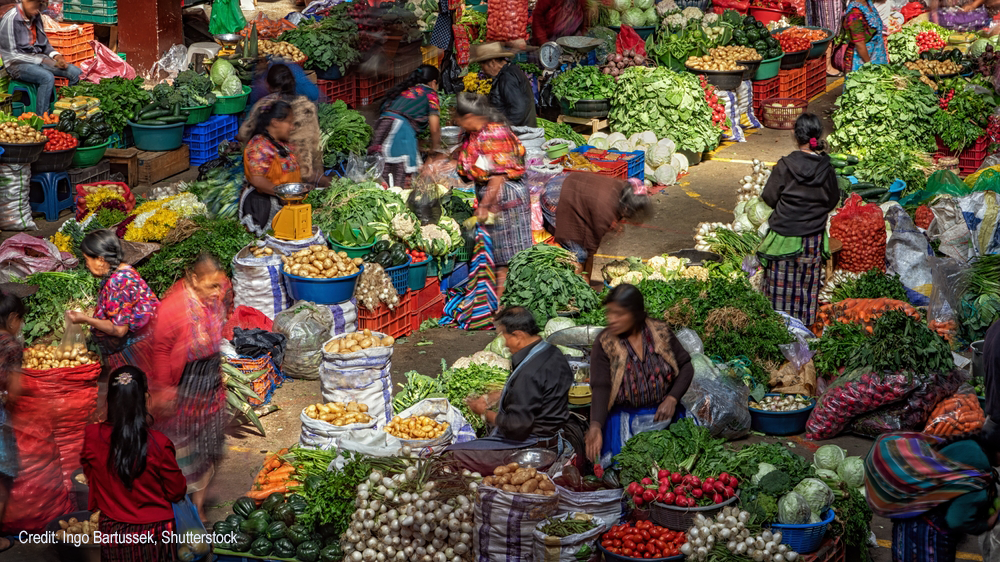
Nov 13, 2024 Tackling Climate Change Through Global Food Systems at COP29 in Baku
The climate change conference COP29 is currently taking place in Baku, the capital of Azerbaijan. This year’s conference includes a pavilion dedicated to global food systems, aimed at creating a platform for “collaborative dialogue, knowledge sharing, and decision-making” regarding the important role of agriculture and food systems in combating climate change.
The impact of global food production on climate change has only recently become a significant topic in discussions about climate change. This issue gained widespread attention with the publication of a report by the Food and Agriculture Organization in 2006 titled Livestock’s Long Shadow (LLS). The report highlighted that global livestock production occupies 70% of all agricultural land and 30% of the Earth’s surface area, contributing to 18% of greenhouse gas (GHG) emissions (see LLS pg. xxi). Furthermore, the report indicated that livestock production accounts for over 8% of global freshwater usage and is “the largest sectoral source of water pollution. This pollution leads to problems such as eutrophication, dead zones in coastal areas, degradation of coral reefs, human health issues, and the emergence of antibiotic resistance,” among other adverse effects (see LLS pg. xxii).
Animal agriculture’s response to LLS has been predictably critical. Subsequent reports have disputed the conclusions of LLS, arguing that raising livestock is crucial for global food security and that the negative impacts of livestock are not as severe as claimed in LLS. Others contend that LLS did not sufficiently document the negative consequences of livestock production. The Breakthrough Institute has reviewed and summarized estimates from seven analyses of livestock’s impact on GHG emissions since the publication of LLS. According to these analyses, estimates of livestock’s contribution to total GHG emissions range from 11.1% to 19.6%, with four of the seven analyses hovering around 15%.
The World Bank has recently entered the debate with a report titled “Recipe for a Livable Planet: Achieving Net Zero Emissions in the Agrifood System” (2024). This report argues that the previous LLS report failed to address the negative impacts of livestock on the environment adequately.
The key findings of the report are as follows:
The agrifood sector contributes significantly more to climate change than commonly thought, accounting for nearly one-third (16 gigatons) of annual GHG emissions. However, a substantial opportunity for low-cost climate action in the agrifood sector remains untapped.
– Currently, insufficient funding is being directed towards reducing agrifood emissions. The financial returns on such investments are estimated to be about 16 times the initial costs.
– Efforts to cut agrifood emissions must be implemented carefully to avoid job losses and disruptions in the food supply.
– Taking mitigation action in agrifood will not only help reduce emissions but will also provide additional benefits, including better nutrition, improved human health, and biodiversity conservation.
The World Bank report concludes that the world’s food system needs to be fixed because it harms the planet and significantly contributes to climate change. It further argues that immediate actions can be taken to make the agrifood sector a greater ally in combating climate change and restoring the planet’s health. These solutions are both accessible and affordable.
Agreeing on the impact of livestock on global health and well-being and its specific role in supporting the world’s food system is a complex task. The Food and Agriculture Organization has projected that global livestock consumption will double as wealth increases. However, it is still being determined where the additional land to support this doubling will be sourced. According to Our World in Data, livestock production currently occupies about half of the world’s habitable land. Without substantial innovation and improvements in efficiency, doubling livestock production would require using ALL of the world’s habitable land. Regardless of livestock’s contributions to GHG emissions, if all habitable land were dedicated to raising and feeding livestock, this outcome would likely lead to the catastrophic loss of biodiversity.
The representatives of governments, interest groups, and food advocates gathered at COP29 in Baku face substantial challenges in reaching an agreement on creating a more sustainable world and global food system. The World Bank reports that global food systems can implement accessible and affordable changes to address climate challenges. However, achieving the majority of the climate change goals that have been set will likely require extensive discussions and a necessary alignment between those goals and the willingness and ability of countries to bridge the existing gaps.


